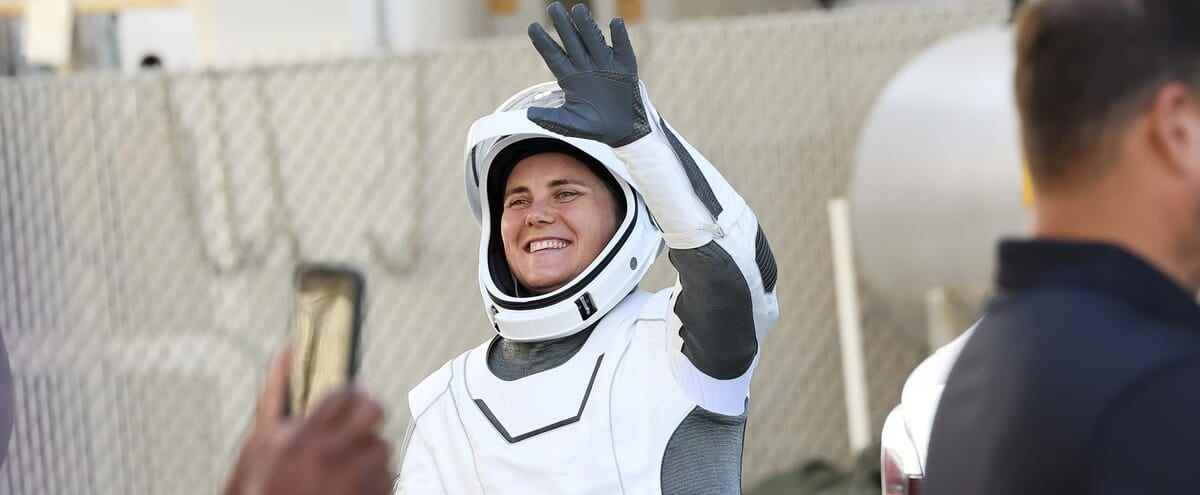A Russian cosmonaut took off on Wednesday for the International Space Station from the United States, aboard a rocket from the American company SpaceX, a mission that is particularly symbolic in the midst of the war in Ukraine.
• Read also: An American and two Russians arrived in the ISS in full offensive in Ukraine
Anna Kikina, the only female Russian cosmonaut currently in active service, is part of the Crew-5 crew, also made up of a Japanese and two Americans, including Nicole Mann, who becomes the first Native American to go into space.
Liftoff took place Wednesday noon from Kennedy Space Center, Florida. This is the fifth regular mission to the Space Station (ISS) carried out by SpaceX on behalf of NASA.
Two weeks ago, an American took off for the ISS aboard a Russian Soyuz rocket.
This long-planned astronaut exchange program has been maintained despite the very high tensions between the two countries since Moscow’s invasion of Ukraine in February. Ensuring the operation of the ISS has thus become one of the very few subjects of cooperation between the United States and Russia.
Transporting the citizen of another nation is “a huge responsibility”, said Kathy Lueders, associate administrator at NASA, during a press conference at the end of September.
Asked about the current relationship with the Russian space agency Roscomos, she said: “Operationally, we really appreciated the consistency of the relationship, even during a very difficult geopolitical period. »
The head of the ISS at NASA, Joel Montalbano, had also praised the “excellent support from Roscosmos” for these joint flights.
award
Anna Kikina, 38 and an engineer by training, becomes the fifth Russian female professional cosmonaut to go into space. “I hope that in the near future we will have more women in the body of cosmonauts,” she told AFP in August.
It is also the first spaceflight of American astronauts Nicole Mann and Josh Cassada, but the fifth for Japanese Koichi Wakata.
After a journey of about 30 hours, their ship will dock Thursday at the station, which is about 400 km above sea level.
Members of Crew-5 will join the seven people already on board (two Russians, four Americans and one Italian).
A few days of handover are planned with the four members of Crew-4, before they are sent back to Earth.
The crew of Crew-5 must spend about five months in orbit and conduct more than 200 scientific experiments, including more than 70 new aboard the flying laboratory.
Anna Kikina is the first Russian to fly in a Falcon 9 rocket, designed by billionaire Elon Musk’s company.
The latter interfered in the debate on the war in Ukraine on Monday, asking his Twitter followers to vote on his own suggestion to settle the conflict between kyiv and Moscow. This implied in particular the abandonment of the Crimea to Russia. The Ukrainian ambassador to Germany replied, still on Twitter, to go “be seen”.
floating future
Tensions between Moscow and Washington have increased considerably in the space field after the announcement of American sanctions against the Russian aerospace industry, in response to the invasion of Ukraine.
Russia thus announced this summer that it wanted to leave the ISS “after 2024” in favor of the creation of its own orbital station – without however setting a precise date for a withdrawal.
The director of manned flights at Roscosmos, Sergei Krikaliov, declared to him on Monday “hope” that the Russian government agrees to extend participation in the ISS after 2024.
The Americans have already said they want to continue operating the station until 2030.
As things stand, the ISS cannot function without one of the two segments of which it is made up, one American, the other Russian. The latter ensures in particular the maintenance in orbit thanks to a propulsion system.
Between 2011 and SpaceX’s first flight to the ISS in 2020, Russia was the only one able to send astronauts there, and made NASA pay for places on board its rockets. The loss of this monopoly represents a significant shortfall for the Russian space program.
The exchange of astronauts this year, which must be renewed in the future, is done without financial compensation.



